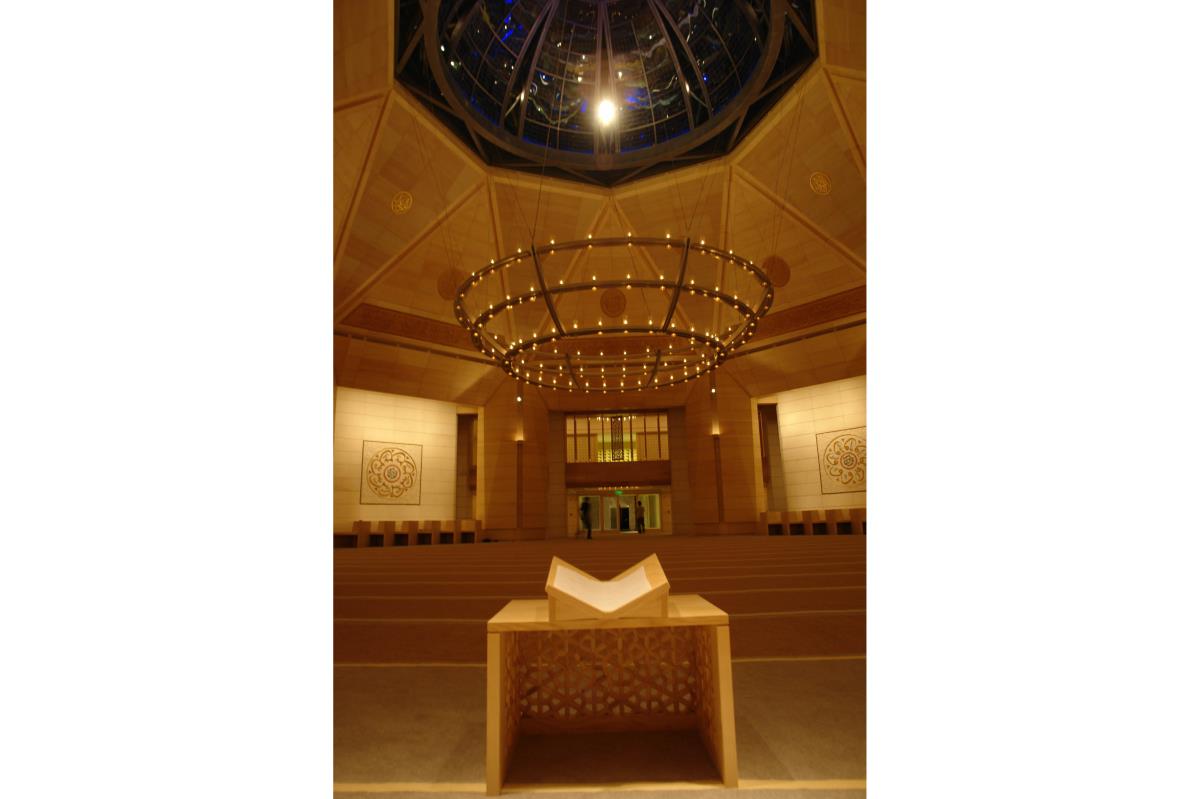
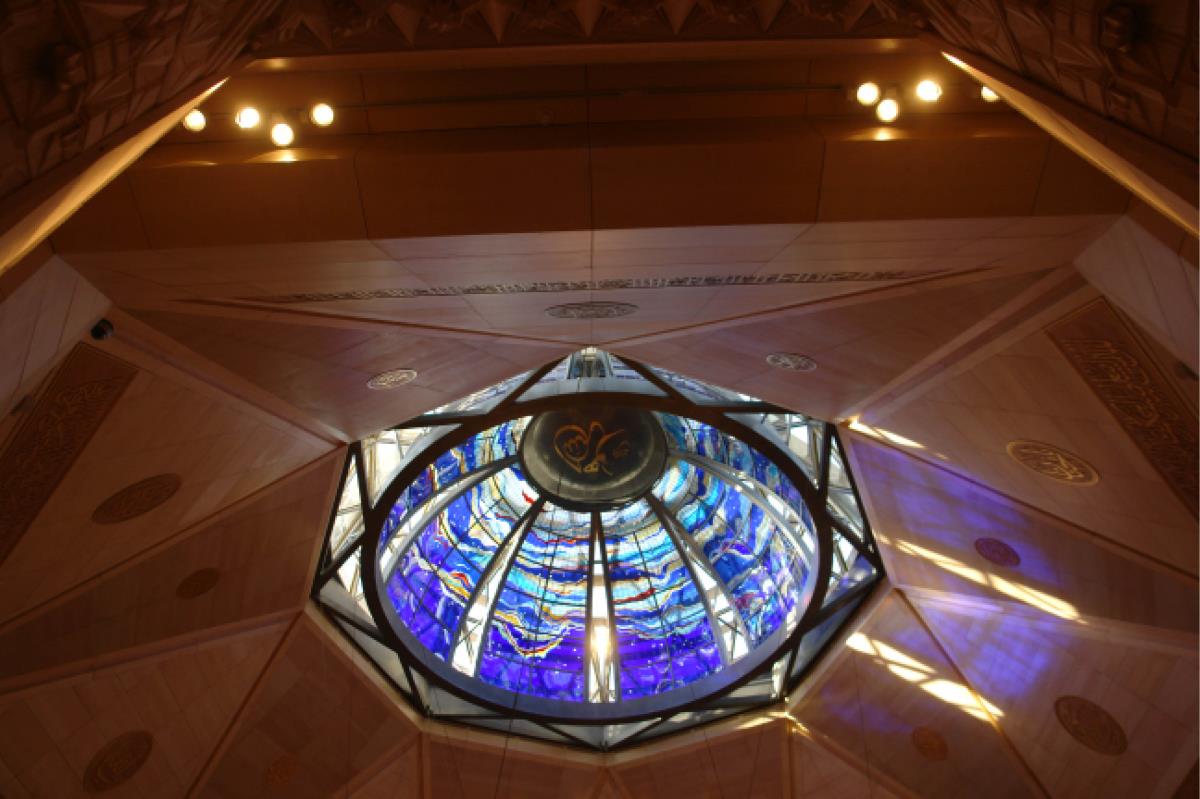
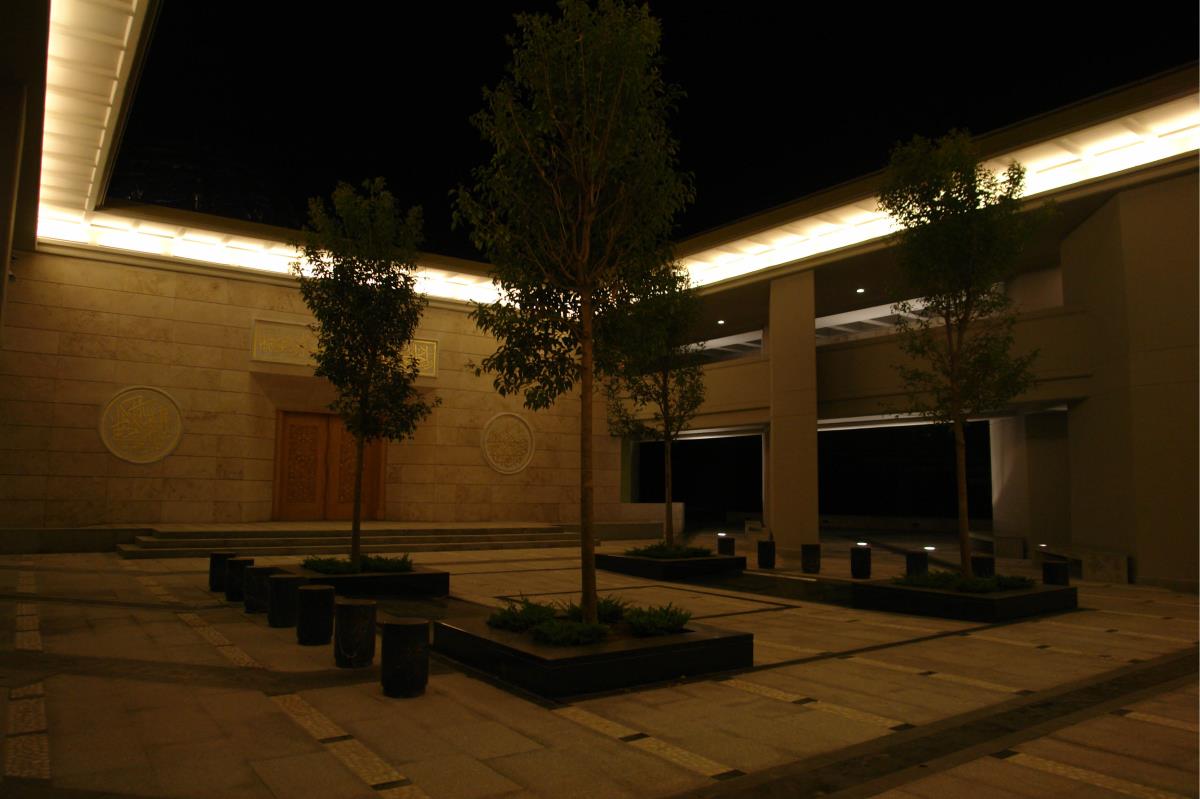
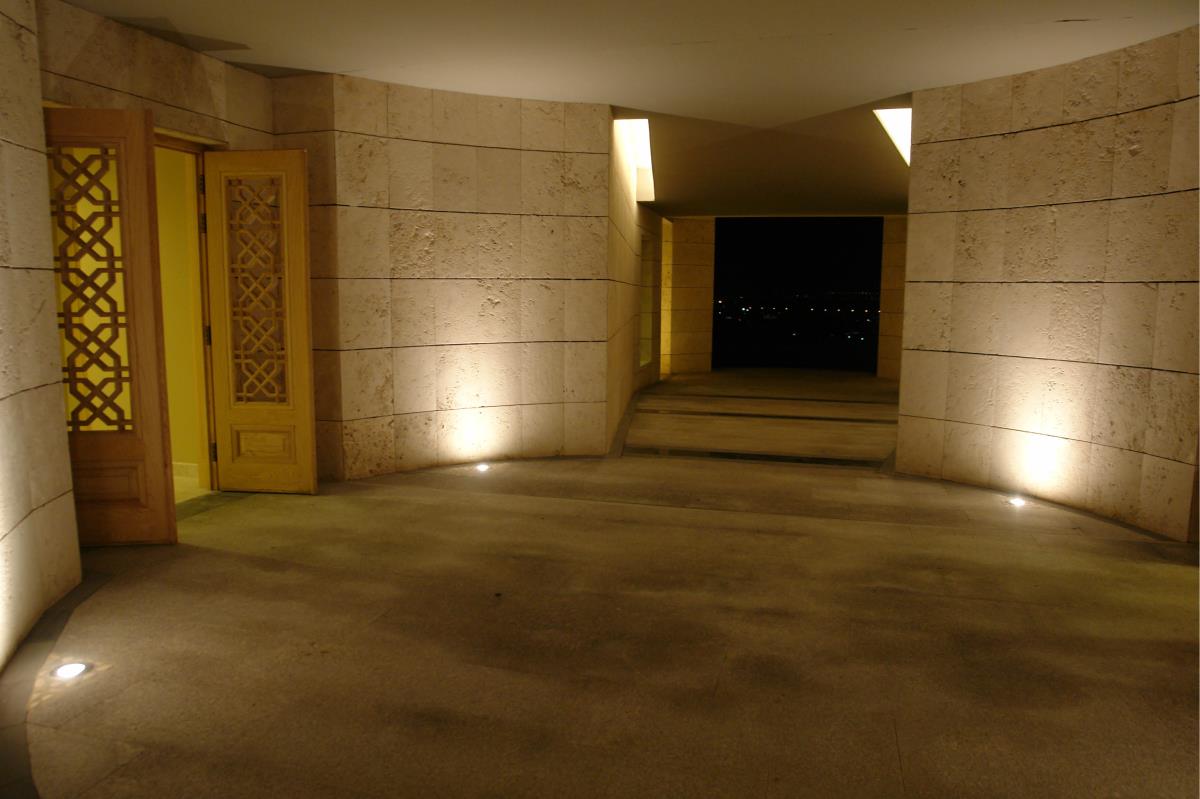
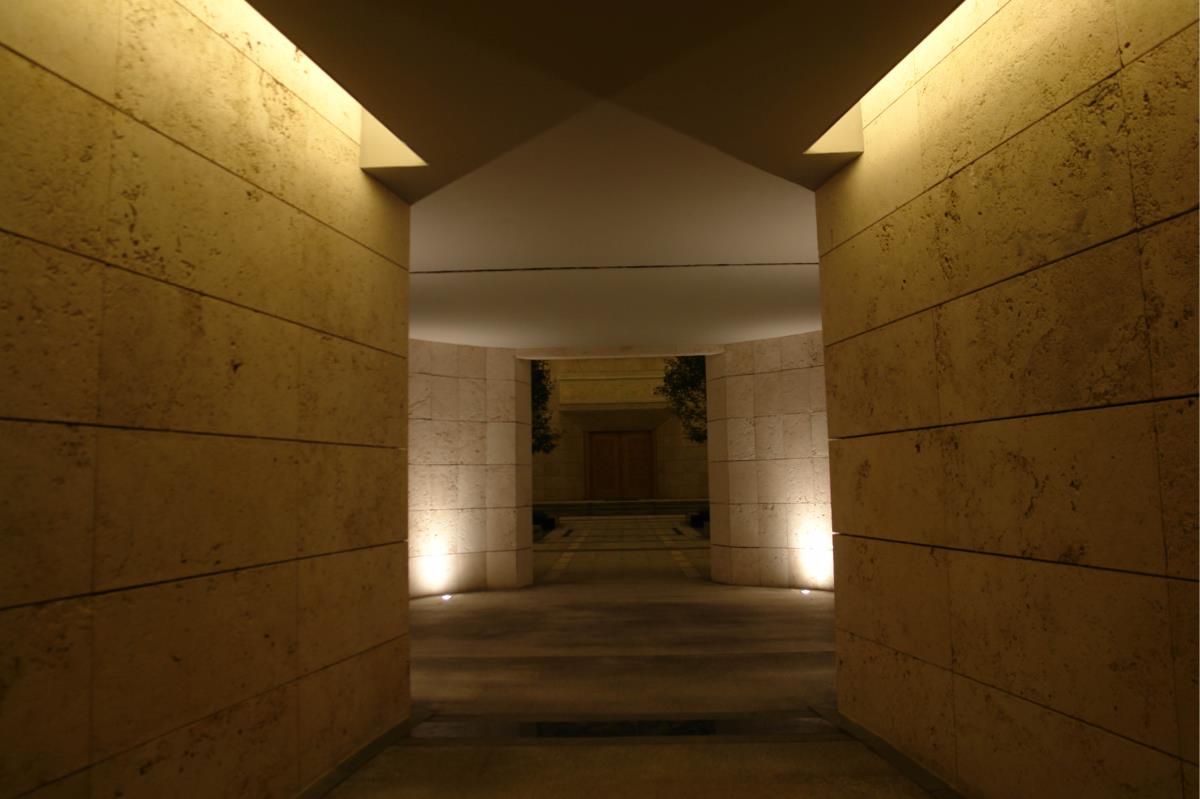
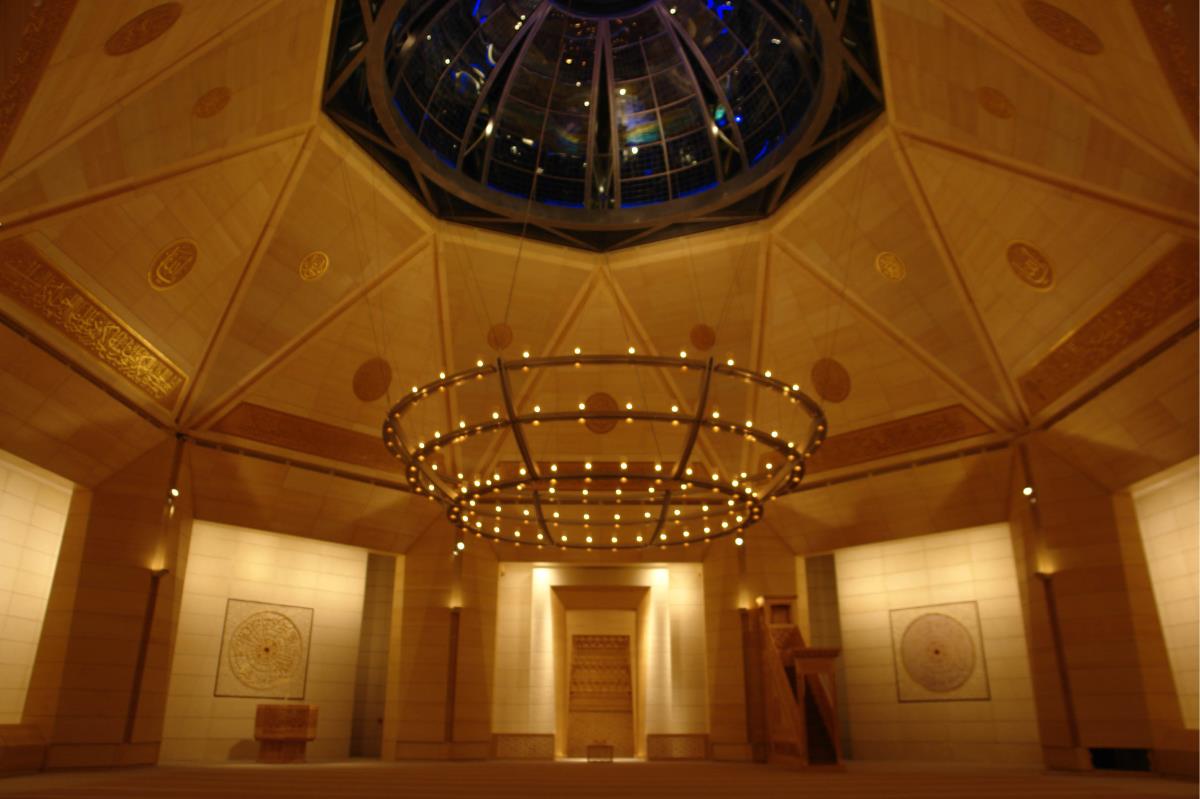
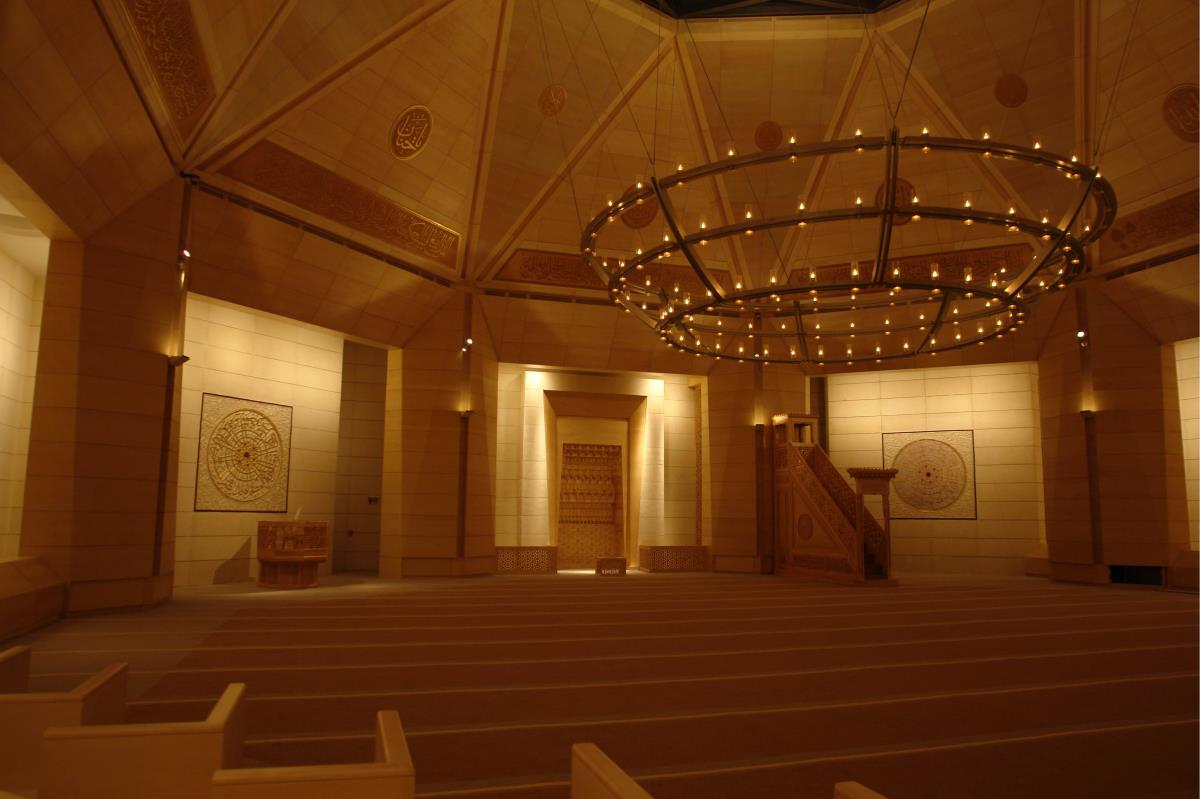
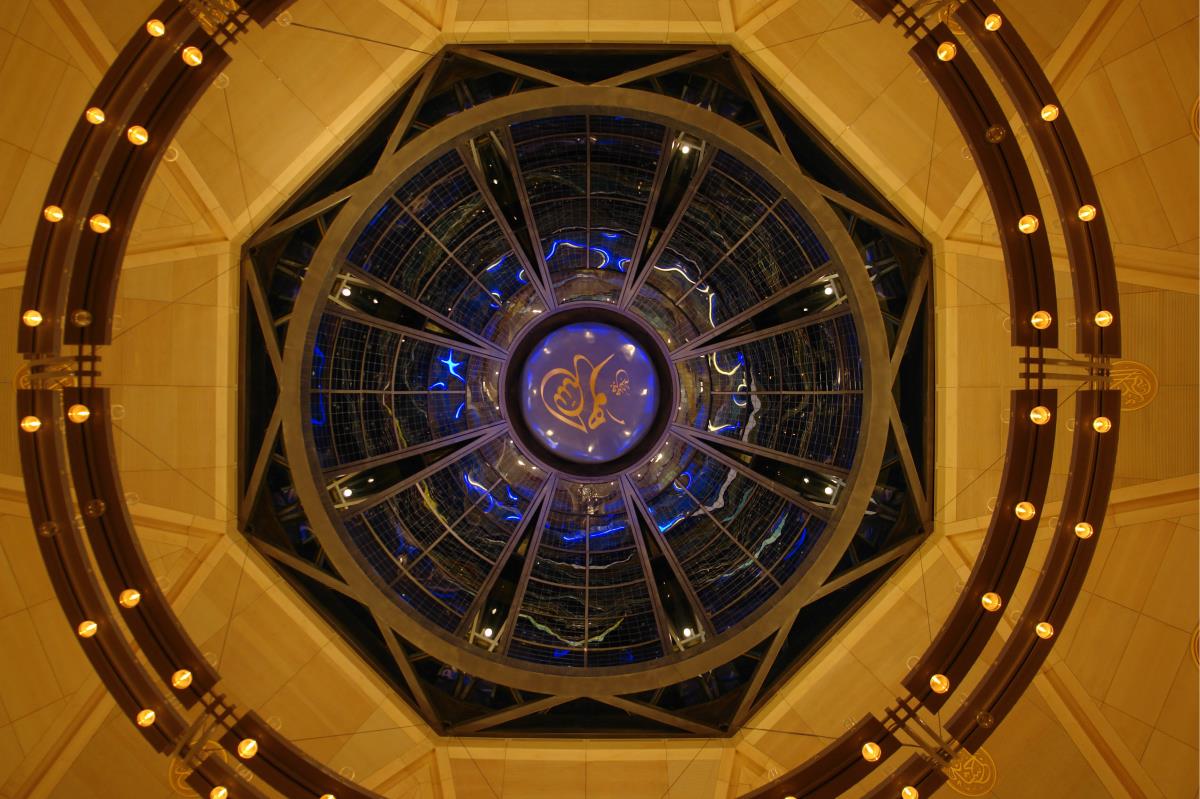
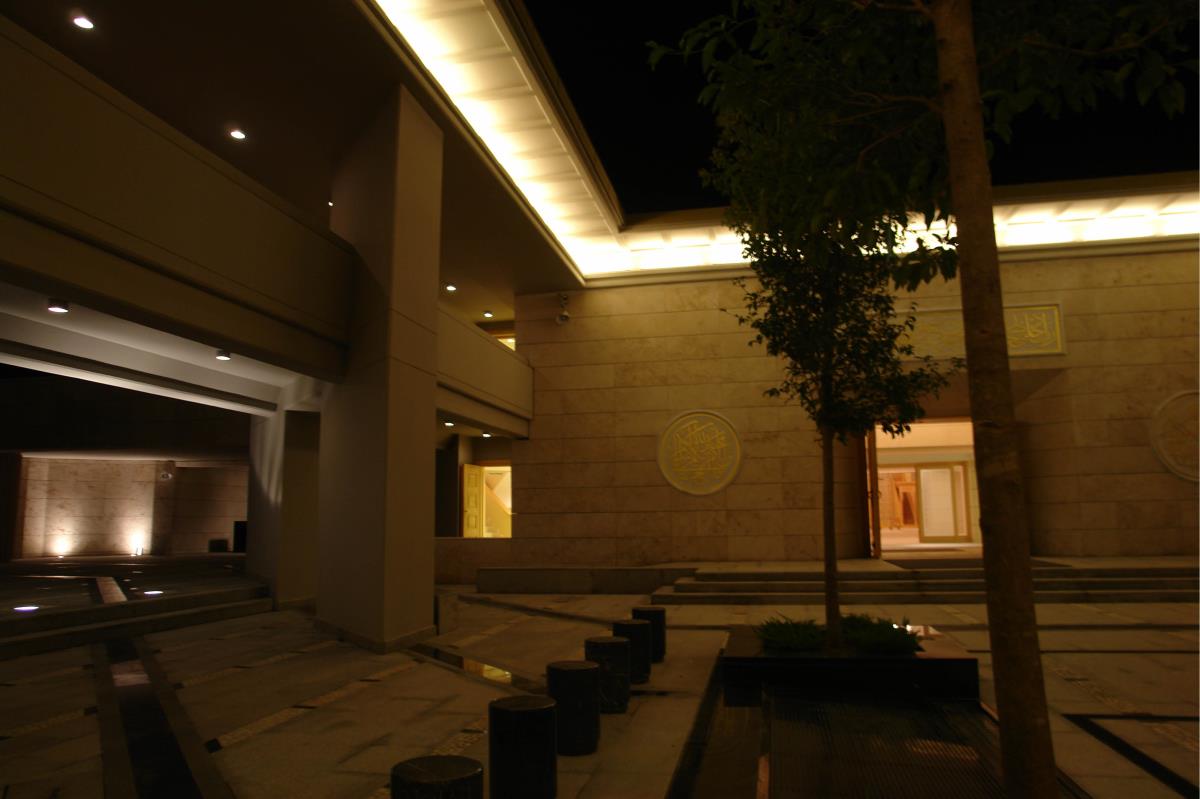
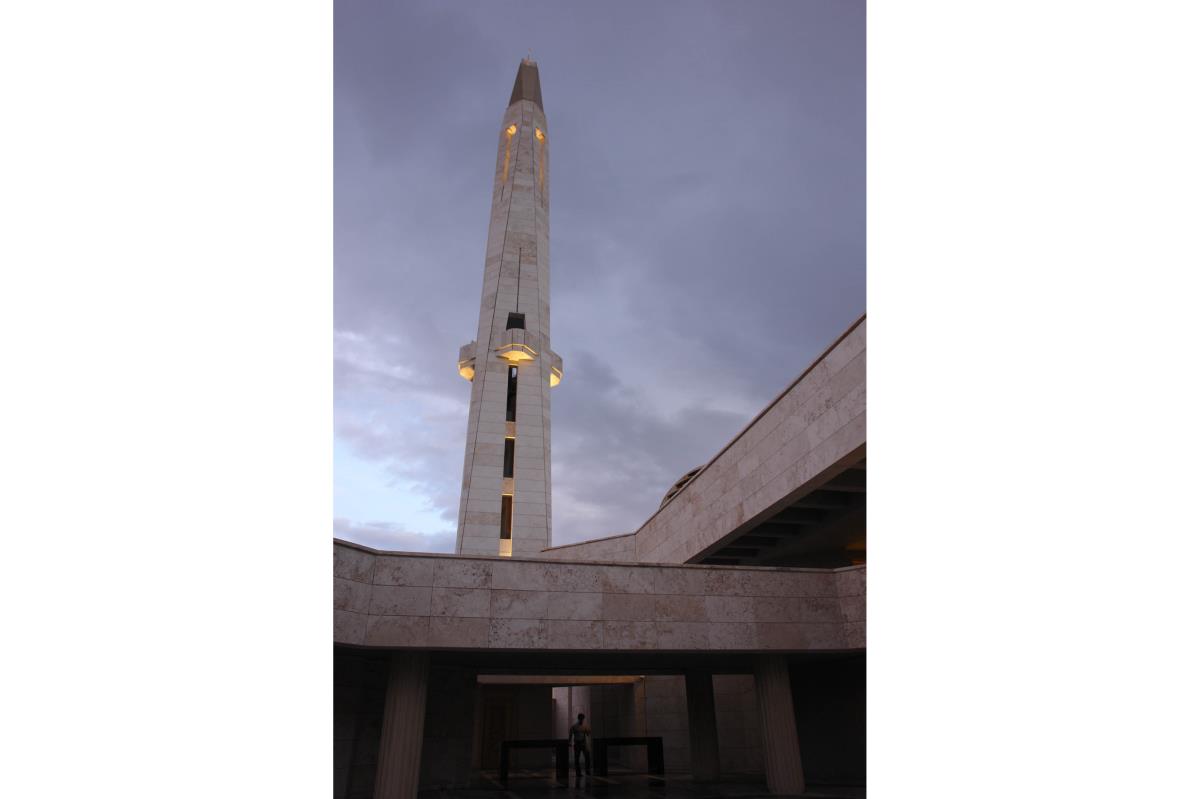
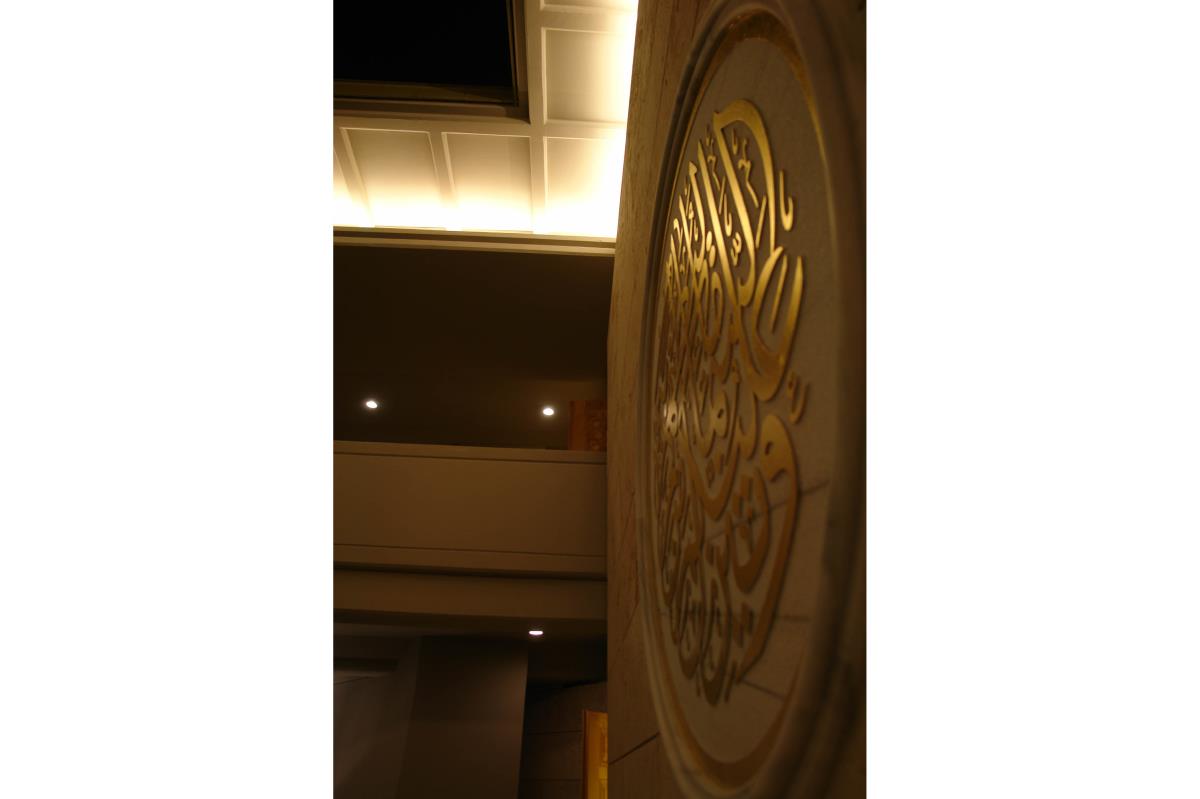
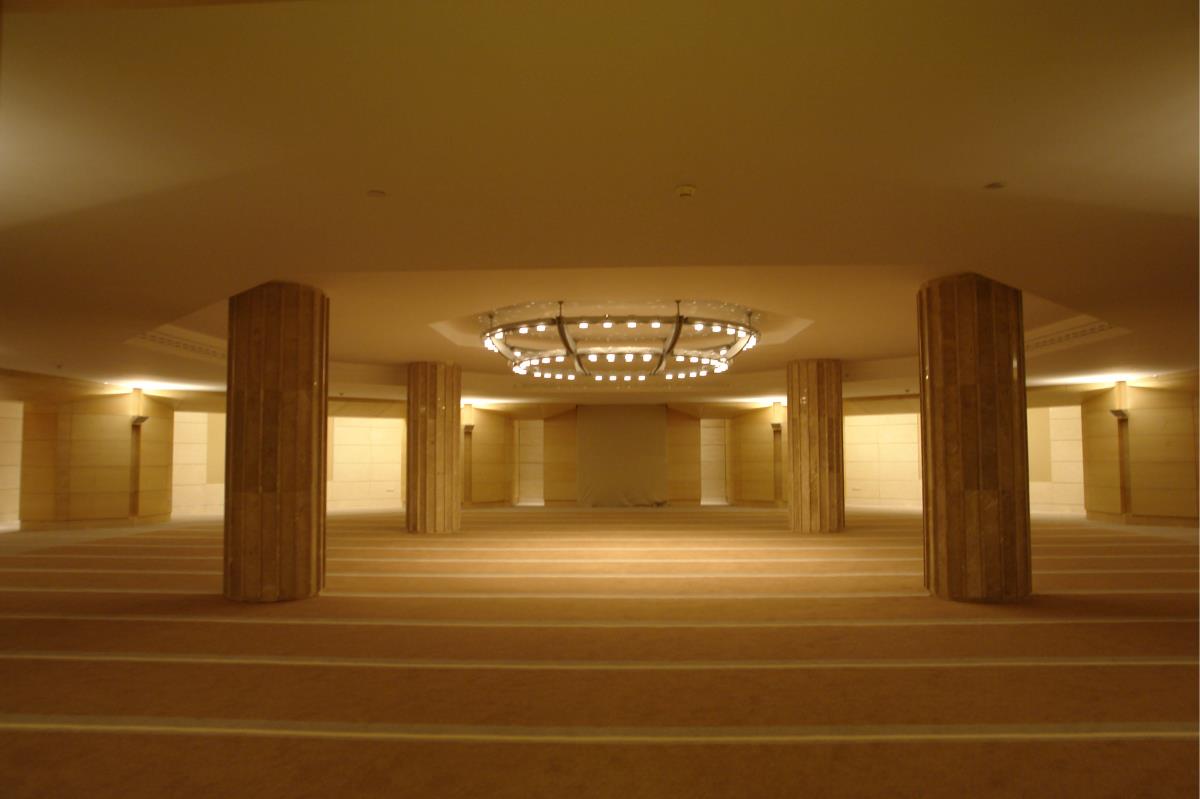
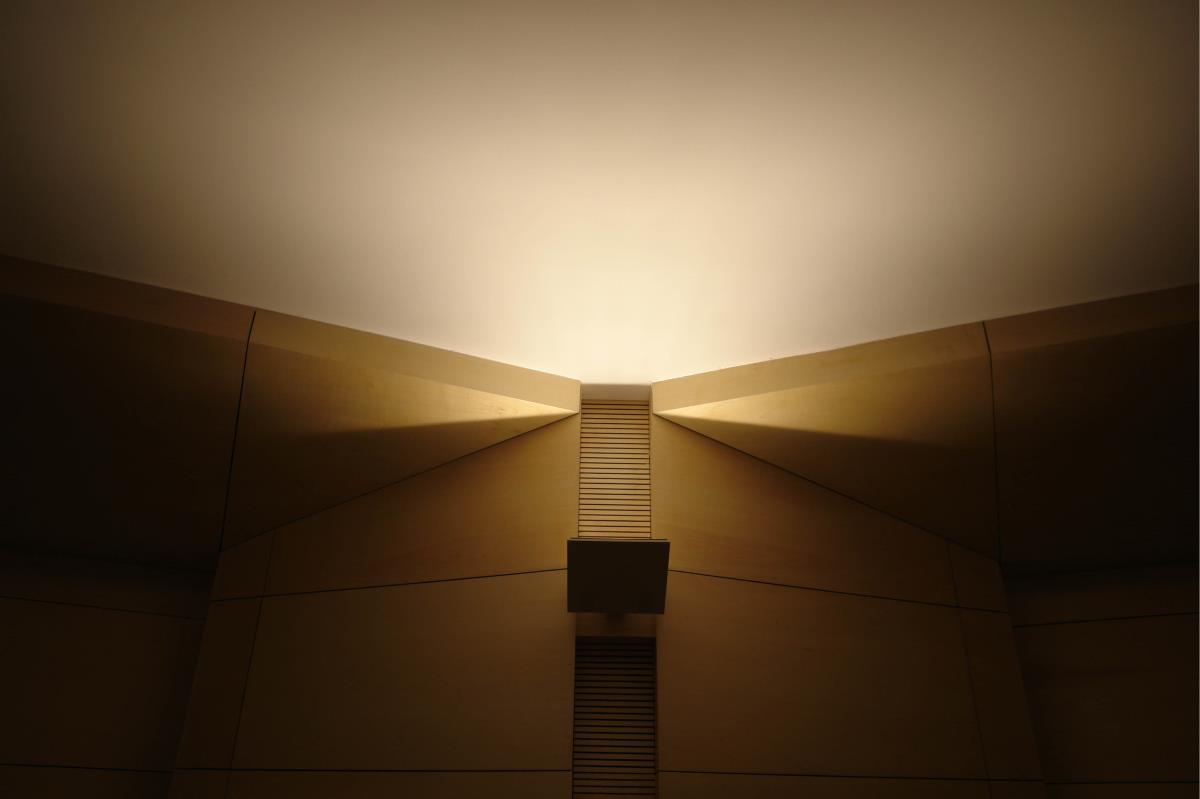
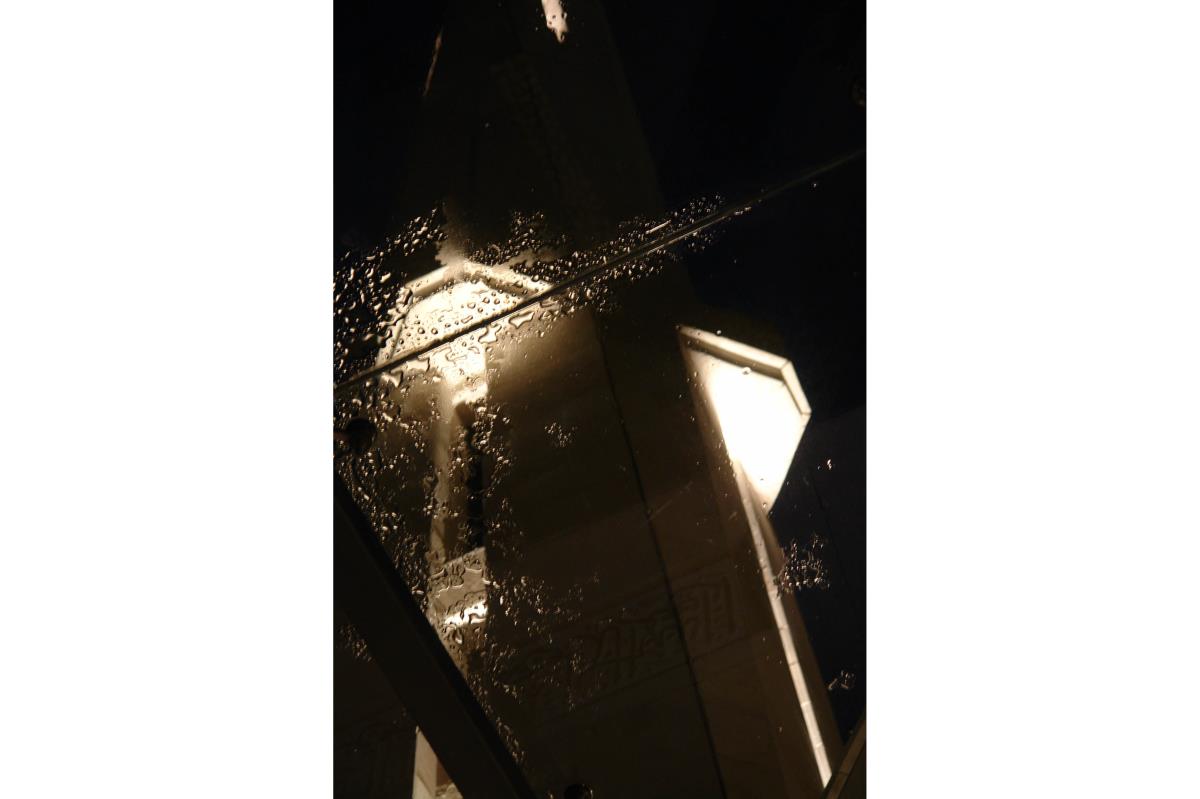
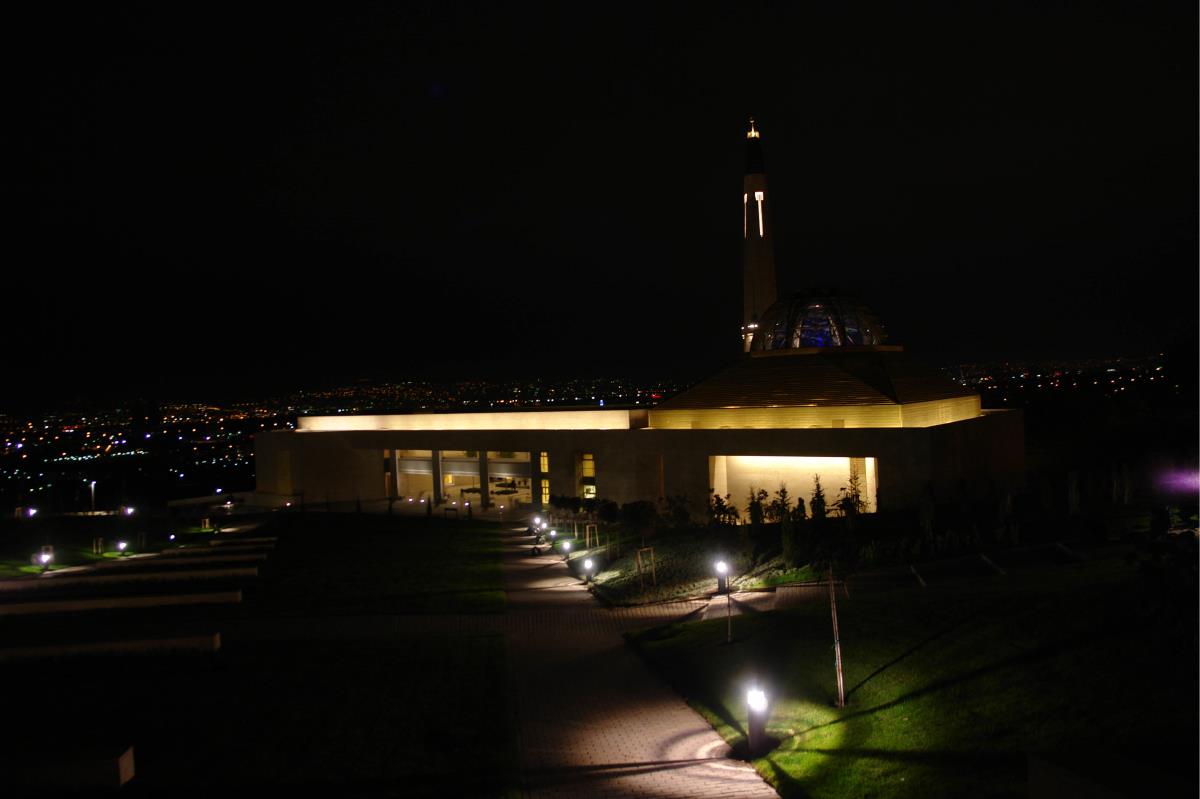
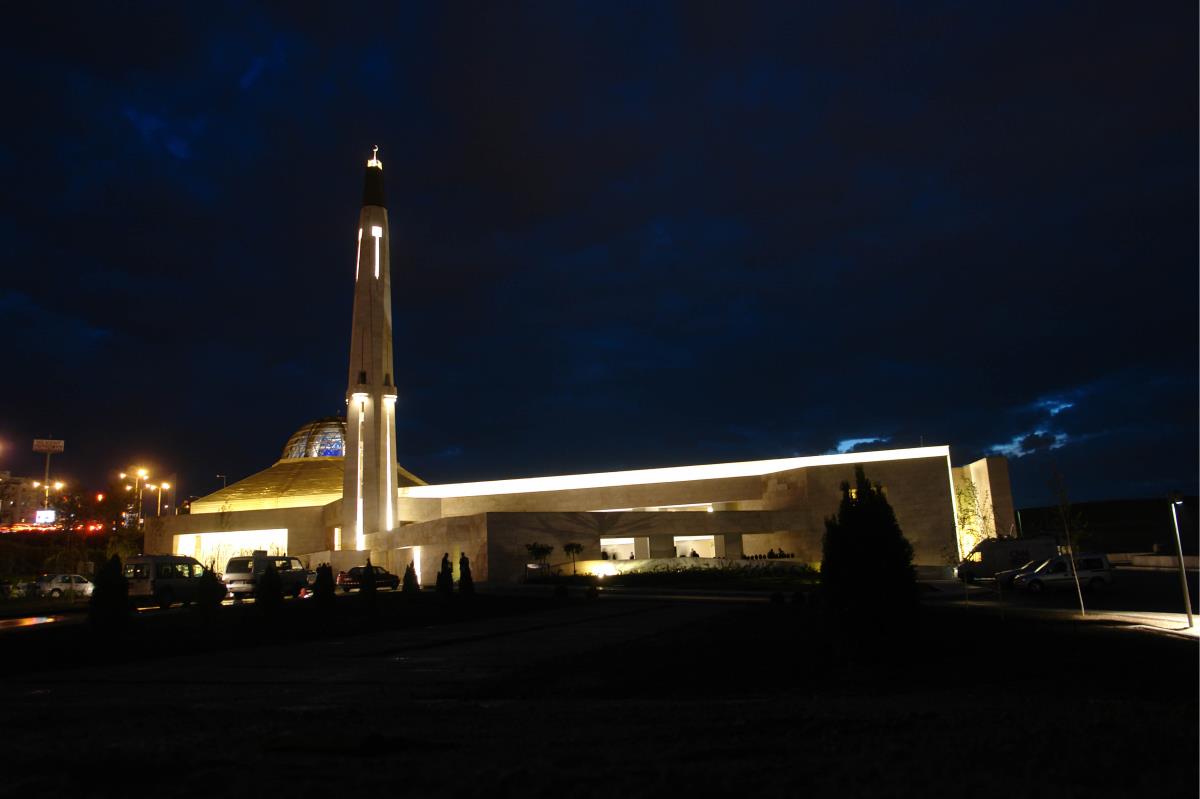
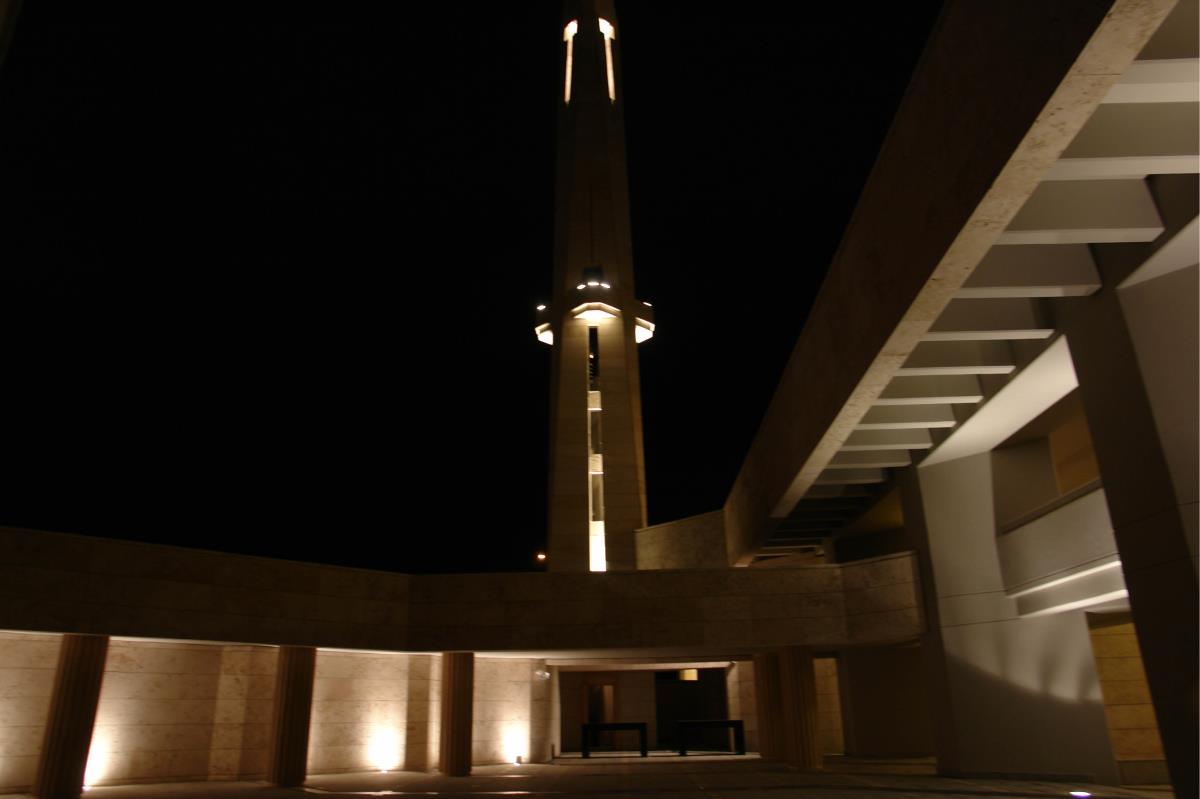
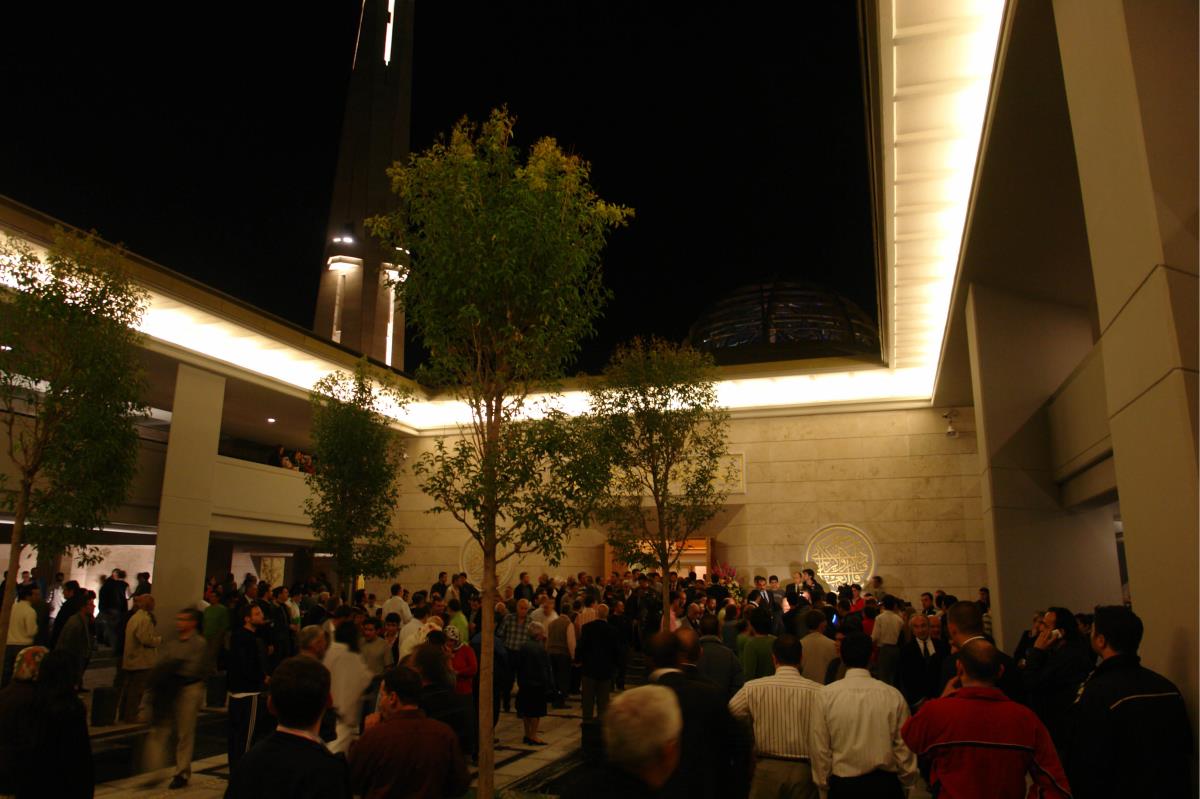
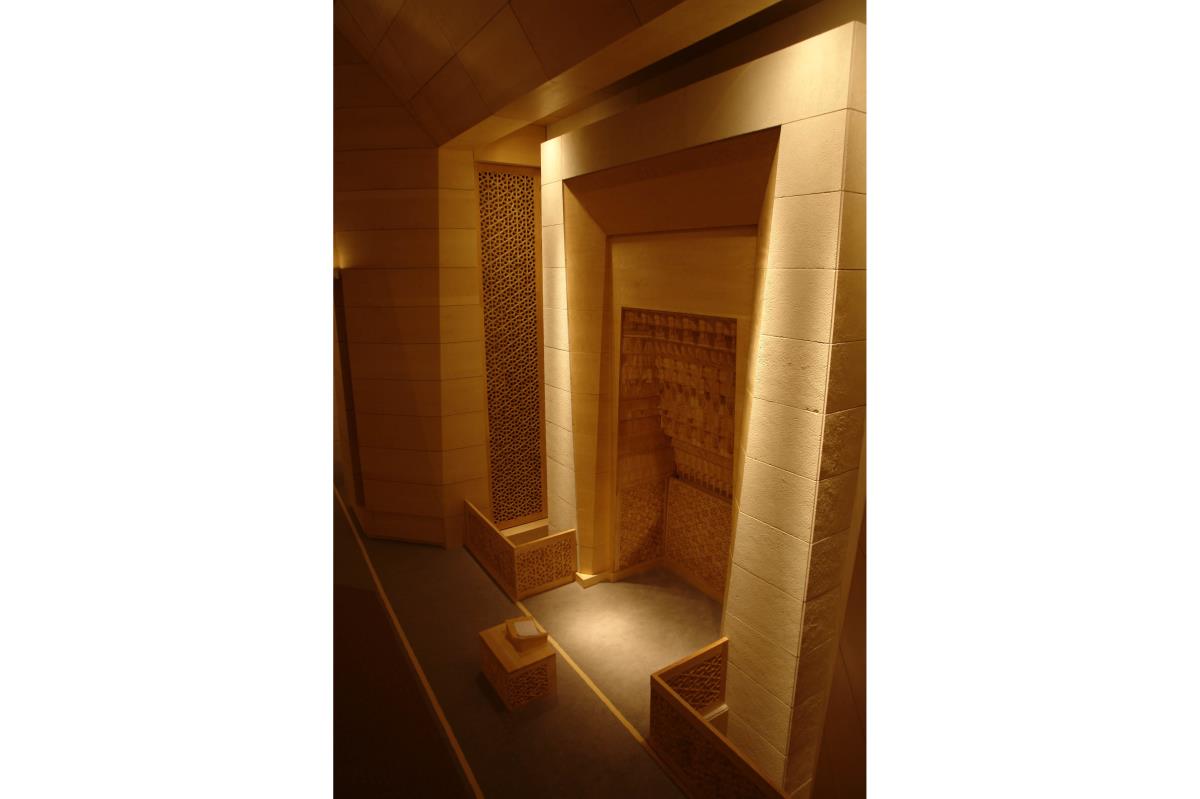
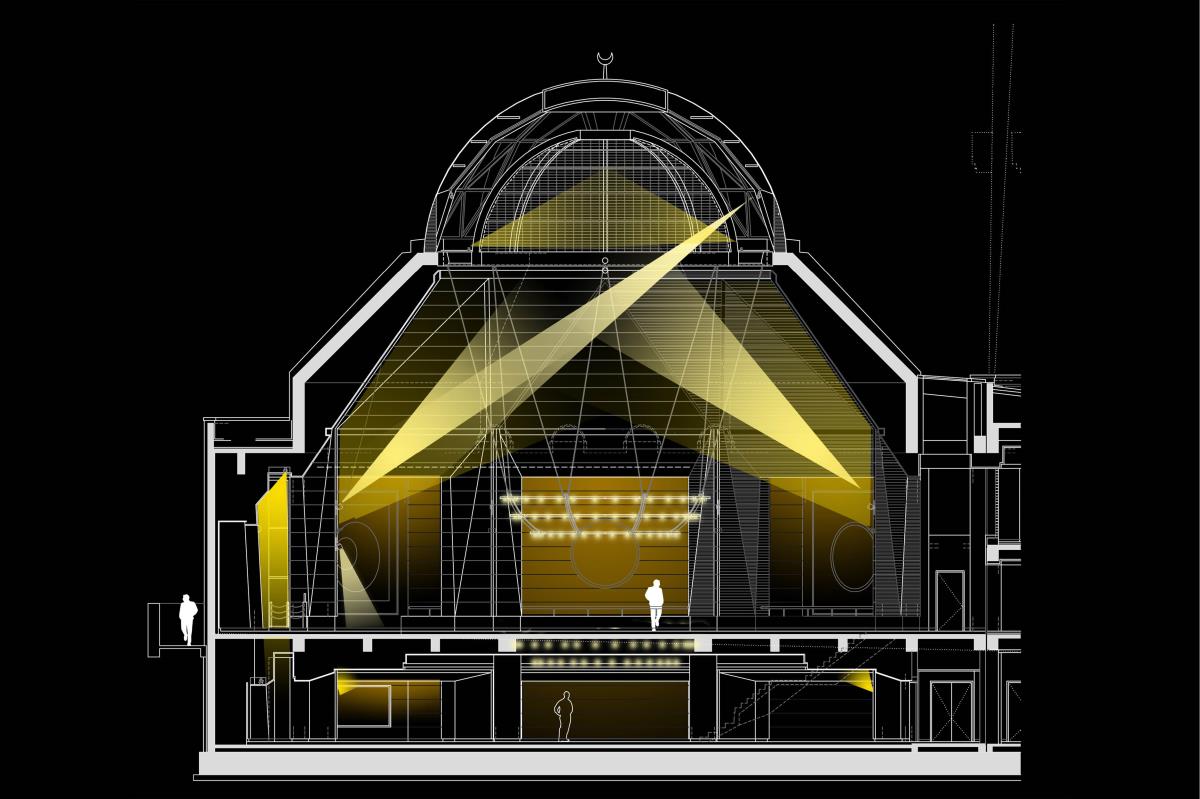
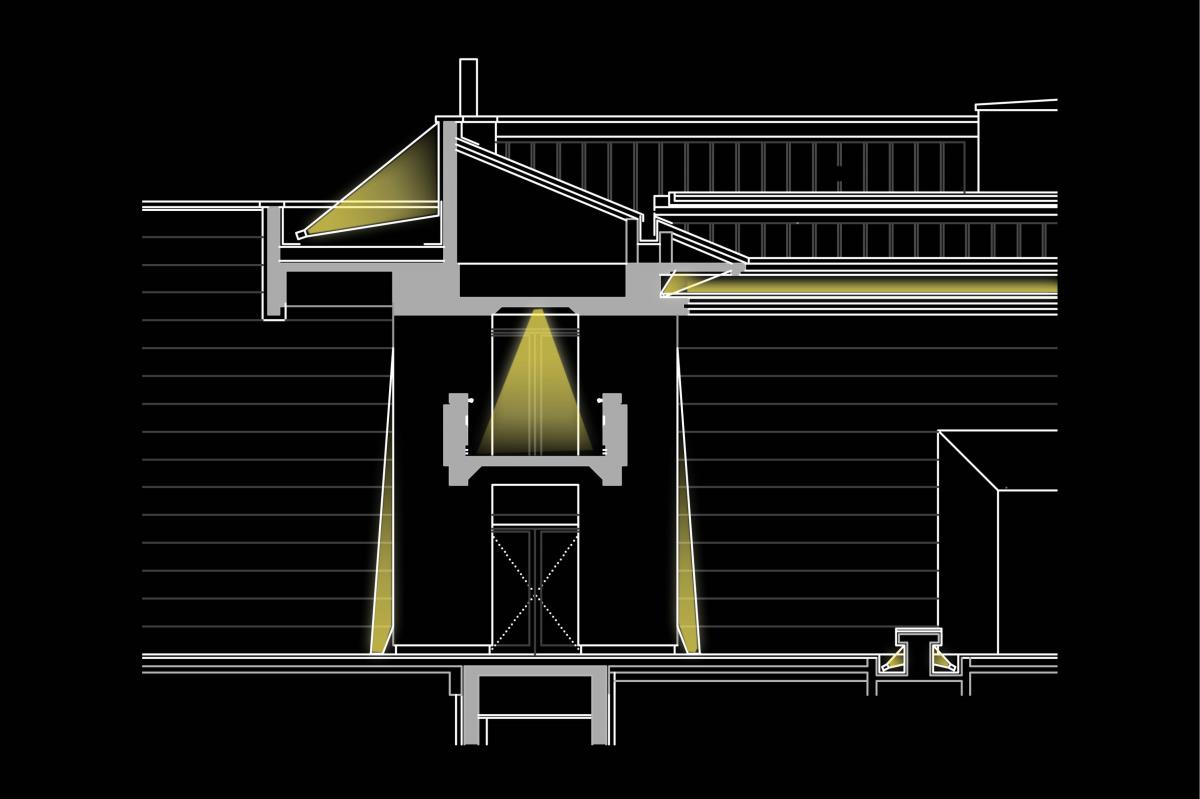
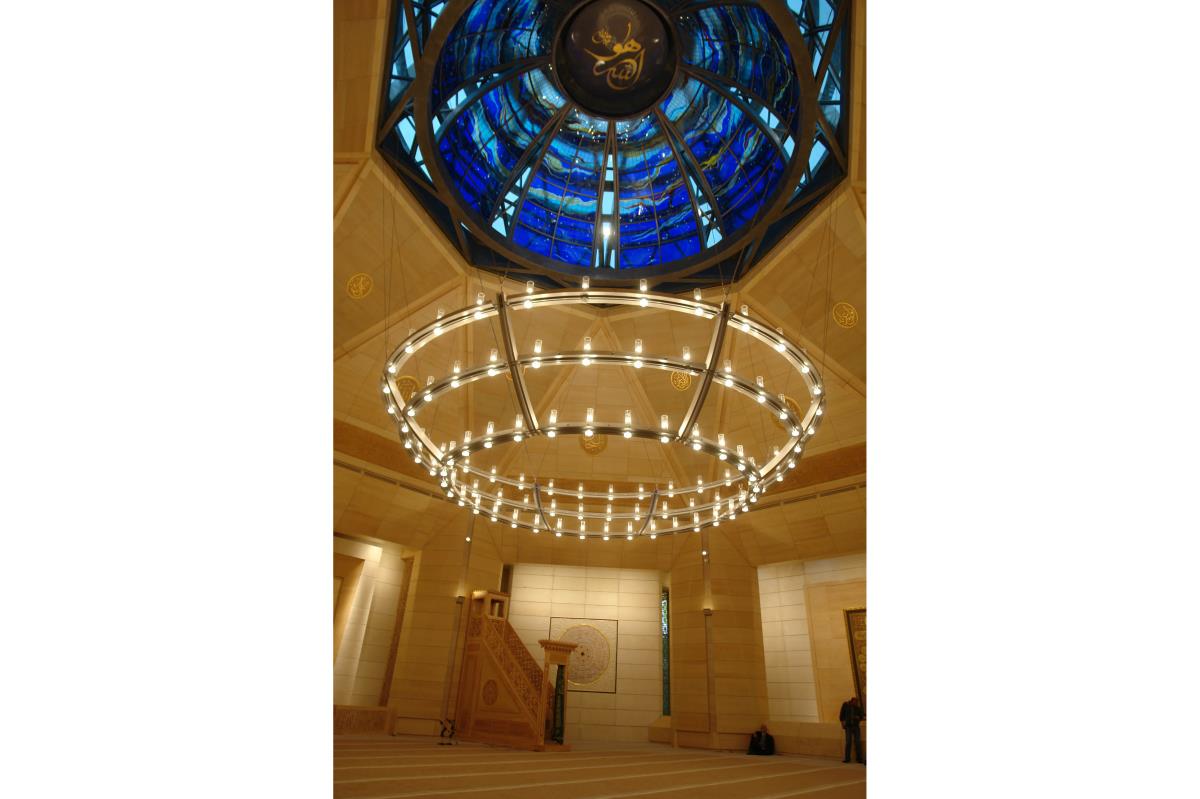
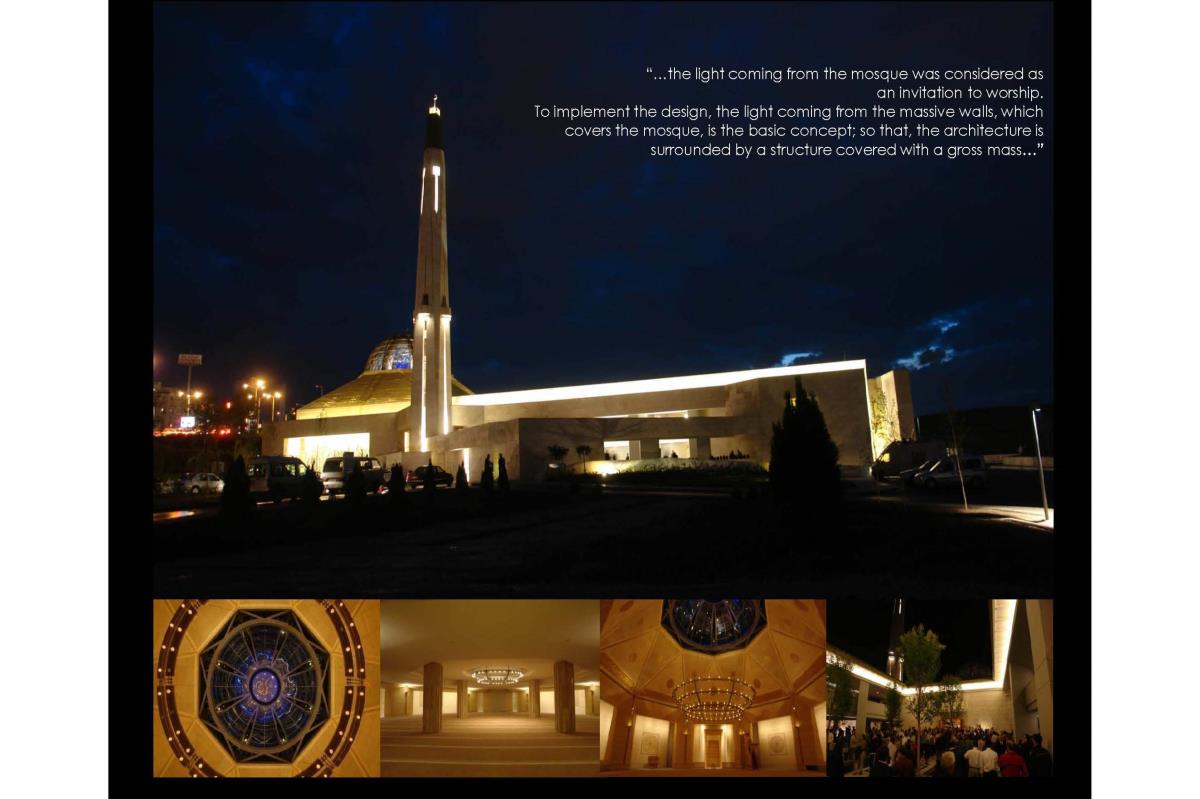
Location, Year: Bilkent, Ankara 2007
Client: Doğramacı Vakfı
Architect: Erkut Şahinbaş
Scope: Interior, Facade and Landscape Lighting Design
Light is an element that people believe in and receive power. For every religion, turning to light has also been turning to God, believing in it, and taking refuge.
Doğramacızade Ali Sami Paşa Mosque was built by the Doğramacı Foundation to allow the worship of Christians and Jews following our tradition of respect for different religions and beliefs. The mosque, designed by Master Architect Erkut Şahinbaş, is shaped as a complex where events such as exhibitions, concerts, and panels can be organized based on the sense of Ottoman mosques.
The plan of the building offers a simplified example of Ottoman mosque architecture. Apart from the dome and minaret elements rising towards the sky, the main mass has a more massive, heavy, and modest appearance. This main body, which is spread horizontally with the harmonious combination of gross concrete and travertine and is free from gloriousness, seems to be closed to the outside and does not glaze. However, vertical tears and ruptures take daylight into the volume in a controlled manner, and these light doors invite people to the place of worship.
In this structure, which makes a difference with its design and technical features, the guiding power of light was used skillfully by focusing on the center and formed the triangulation point in developing the lighting design concept. In parallel with this basic approach, it planned to highlight the mass in the center, which seems to be wrapped with a protective shell, and re-emphasize it with night vision. Contrary to the effect of daylight, the "light" overflowing from a pair of hands that were opened to the sky with the light moving through the vertical tears and gaps would be described. The inner peace and tranquility evoked by the building tried to revealed by using warm-colored light sources on the entire facade. Accordingly, 2700K T5 fluorescent luminaires with low maintenance and operating costs, suitable for energy-saving, long-term operation, and easy intervention when necessary are preferred. It helped to achieve the desired effect by further emphasizing the texture and color of the stone used in the facade cladding.
While entering the interior from the main entrance, the linear light coming from the ceiling completes each other with the roof lighting in the central courtyard & it prepares guests to go to a larger area. The illumination of the upper walls of the courtyard is referred to as the concepts of gathering at the origin of the "mosque" words. Indirect fluorescent luminaires were hidden in niches in this section that should be inviting, plain, and peaceful as the first place where people come together.
The front surfaces of the bridges, which provide the general entrance of the visitors from the side facades to the central courtyard and complete the composition in the horizontal, are illuminated with recessed filter fixtures. It aimed to strengthen the definition of integrity and light mass in the center. From the funeral courtyard, the columns and structural elements were left in the dark, so that the view of Ankara becomes evident. In this relatively dim environment, the dark marble coffin rests illuminated by hidden light sources remind of the divine relationship between life & death.
Simple recessed luminaires, chandeliers, and low light levels, which do not spoil the depth of the place, were envisaged in the place of worship overlooking the central courtyard. The elegance of the especially emphasized mihrab and its surroundings is noticeable from the courtyard even when the main door is open. The chandeliers, which give clues about the atmosphere in the entrance, welcome you as a small model in the last congregation area. The glass dome, which allows different colors to be reflected into space with the movement of the sun during the day, is defined by different shades of blue thanks to the fluorescent light sources when it gets dark. In this section, it represents the center, it is worth watching the blue flames formed on the dome stained glass with the support of the sconce, chandelier, and spots used in the lower elevation located next to the linear fluorescents added to the steel carcass system.
On the vertical walls surrounding the dome, the special manuscript of the calligraphers working on the gold leaf is, the inscriptions written in Allah and Mohammed, illuminated with dimmable halogen wall washer luminaires. The importance emphasized by highlighting the wall surface with narrow-angle spots that hidden in the dome. The mihrab surfaces, one of the most special places of the mosque, were emphasized more strongly, and it envisaged to emphasize the stone texture. The illuminated masses behind the imam emphasize the direction, while at the same time allowing reading at a comfortable sight. The actual mosque shell that remains on the background of the columns illuminated by daytime skylights and light from surface tears. At night, the hidden wall washer set emphasizes the same feeling, revealing the calligraphy and inscriptions on the surfaces in their most natural form. These surfaces are also highlighted by narrow-angle halogen luminaires hidden on the construction of the dome and create different meanings according to the chosen scenario. The lighting system separates the columns & background and supports the depth of the space.
The stairs hidden behind the columns leading to the lower floor prayer area are illuminated by narrow-angle luminaires at the level of circular skylights from 10 m height. This floor resembles a small dome-free model of the main worship place. The mihrab is defined by two tears that are located on both sides of the day & provide a light connection with the upper floor. The light gliding from above into space reminds users of the main location when defining the entrances. This light is provided naturally from daytime roof lights and tears in the corners. At night, it obtained with wall washer sets and narrow-angle spot sets used on the prayer hall ceiling. The design of the chandelier & the use of column sconces also refers to the upper floor.
A comprehensive light control system was used throughout the mosque to cascade the levels of the atmosphere defining the volume, prevent undesired effects, and reflect the deep effect. The system reflects the desired light scenarios according to the time zones and works only at the time of use. In this way, savings made in energy consumption.
The building located on a large land overlooking Ankara.
The orientation, consisting of its natural slope, was used as part of the design. The green blanket is enriched and designed for pedestrian and vehicle use. For the illumination of the surrounding areas, a design that would not prevent the building that illuminated in a certain concept should be considered. For this, poles that are as simple as the building and only light on the ground were used in environmental lighting. In the pedestrian areas, bollards with lean lines were used, which also gave light to the ground. Visual directions were made with plant lighting while the light levels kept at a level that can safely define the environment.
The mosque, which will set an example with its architecture, technology, and multi-purpose use, was opened for worship in September 2008. The conclusion of all lighting details as planned during the concept design phase also underlined the success of the project achieved with good teamwork.
